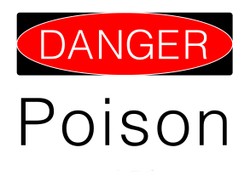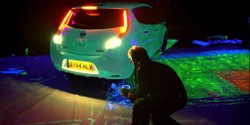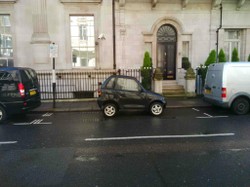No, I'm not asking you to confess to attempted murder!
I see aisles upon aisles of household products in the grocery store: toilet bowl cleaners, tile cleaners, other bathroom cleaners, kitchen cleaners, general-purpose cleaners, air fresheners, floor cleaners, and so on. Each is a cocktail of different chemicals--some known carcinogens and toxins (the government does not monitor the safety of personal care or cleaning products). If you are using more than one of these cleaners, you may be creating a dangerous chemical combination that could endanger the health of your family.
But do you really need all these products? It may be that just a few will suffice for your need to clean your house, and you can do without the rest. By lessening your family's exposure to toxins, you may be able to reduce your medical expenses and need for drugs (more chemicals).









 My Experience with KaiZenon 04/19/2016
My Experience with KaiZenon 04/19/2016
 How to Use Your Car Cigarette Lighter: Fun, Ridiculous and Useful Aftermarket 12-volt Accessorieson 10/03/2015
How to Use Your Car Cigarette Lighter: Fun, Ridiculous and Useful Aftermarket 12-volt Accessorieson 10/03/2015
 Why Use NextDoor?on 07/13/2015
Why Use NextDoor?on 07/13/2015
 Food Network Toaster Reviewon 06/12/2015
Food Network Toaster Reviewon 06/12/2015



Comments
There are some things now that are all natural ingredients, like oranges. We have some of these products, and they actually work well. But, chemicals are indeed potentially dangerous. In some cases reactions take so ling to occur they are not yet known to be dangerous. Our chemist on campus often has said that he s glad we went through before things were dangerous, and as a physicist who has used too many of those formally "safe" chemicals I am now very skeptic.
Baking soda is an awesome cleaner! I use more of it to clean than I do in my food. I love vinegar on my garden too, use it in a homegrown mix with salt and washing up liquid where I have weeds but would rather have a plant urn standing. As far as reactions go, yes, just experienced one from removing cows' milk from my diet because soya milk keeps better. But my body LIKES cows' milk. Bones ache and skin goes dry without it. So, not a poison exactly, but a definite reaction against too much soya milk in my diet. Odd how things happen - it's usually the other way on but for some reason I need my dairy.